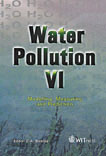Detection Of Polluted Ground Water By Spontaneous Electrical Potential
Price
Free (open access)
Transaction
Volume
49
Pages
6
Published
2001
Size
469 kb
Paper DOI
10.2495/WP010061
Copyright
WIT Press
Author(s)
J.A. Randall-Roberts
Abstract
Detection of polluted ground water by spontaneous electrical potential J. A. Randall-Roberts University of Guanajuato, Dept. Of Agriculture Apdo. 168, Guanajuato, Gto. CP 36000, MEXICO. Abstract The spontaneous potential (SP) method is a very sensitive geophysical system that detects changes in the quality of ground water based on surface measurements in mV (millivolts). The SP signal is evaluated from curves by interpreting amplitude/wave length. In deep clean aquifers, amplitudes range from 5-15 mV over wave lengths from 150-550 metres; in studies on a shallow very polluted aquifer, the amplitude reaches 80-100 mV, with cross-overs from negative to positive readings, and much shorter wave lengths, 30-80 metres. The signal is caused by Redox reactions in the ground water and in its reactions with the host material, making the method useful for water pollution studies. 1 Introduction The use of spontaneous electrical potentials as a surface geophysical prospecting metho
Keywords





